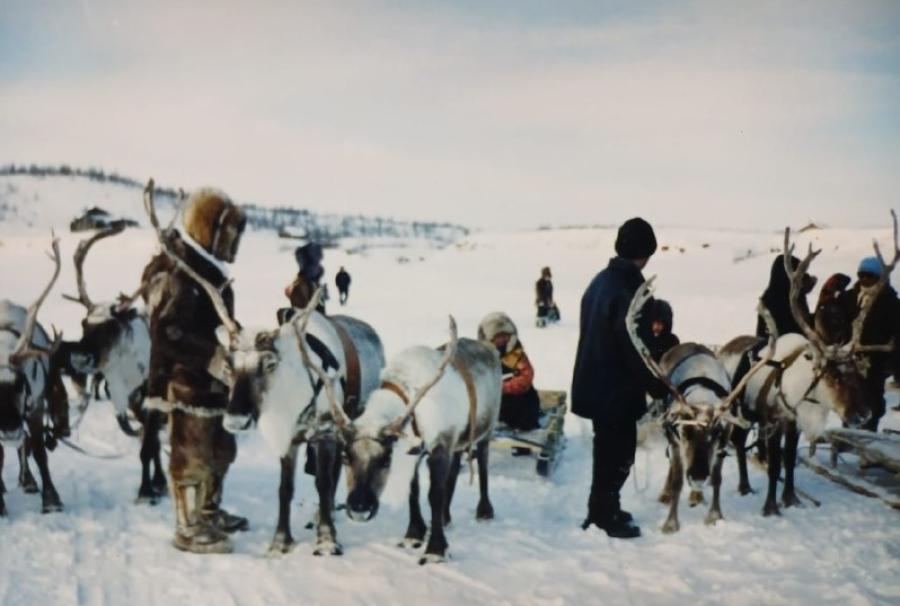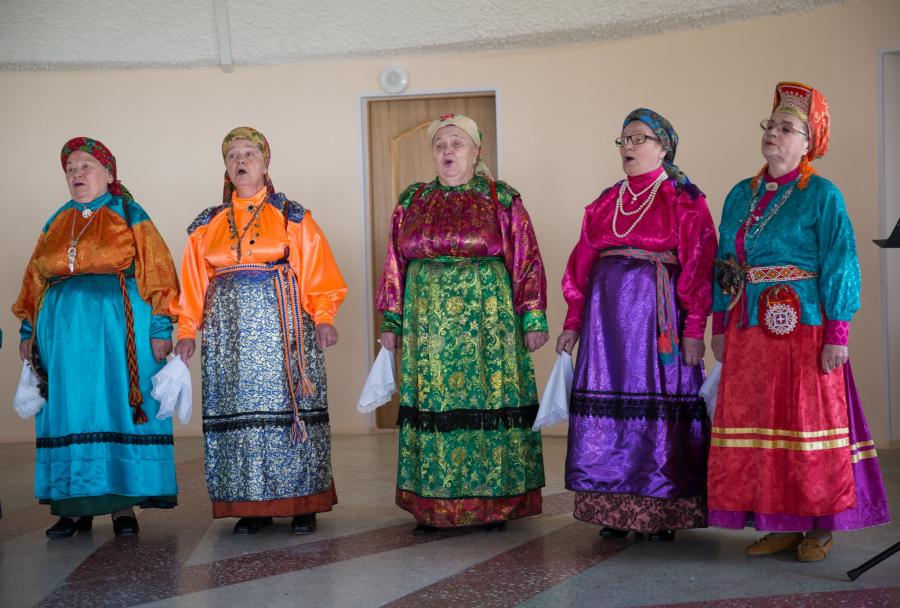Maps provide an orientation. Ancient maps looked eastward, hence the expression." Maps, literally and figuratively, can put things in perspective and people in their place.
For most of the twentieth century, the orientation of the world map appeared immutable largely because of the standoff between East and West. Indeed, in the 1950s, '60s, and '70s, the map of Africa underwent a revolution without altering our orientation. With the changing boundaries of the former Soviet and East European states, we have lost our geographical and political guide posts. And without the East-West divide, Third World states and independence movements have lost their bearings as well.
After seven decades of communism with a less-than-human face, one hesitates to say anything about the former Soviet Union: what seemed immutable will change tomorrow. What is clear is that the end of the Cold War represents both a step forward in international relations and ushers in an era of dangerous volatility. The confrontation between two powerful states has left in its wake a globe full of ignored and exacerbated ethnic disharmony.
Consider our "Map of the Peoples" on page 24 showing some 100 different nations and ethnic groups in the former Soviet Union. This map is necessarily deceptive, a "map of convenience" that shows all peoples in discrete geographical ares. But many groups coexist on the same territory, and many spread over several regions. Some nations of peoples transcend state borders, others live within the borders of one state. Many peoples have successfully resisted homogenization by either totalitarian rule or a myth of melting pots. As is so evident now, insofar as either system represses national identities, they fuel the fires of militantly destructive nationalism.
That burdensome legacy is evident in the two centers of power. Racial politics remains the American curse. And while the United States remains standing after the Cold War's anticlimax, it has barely enough strength to fight its own economic battles at home. Isolationism - left and right - is on the rise as presidential candidates and community advocates alike thunder for "America First."
In the Soviet Union, revived ethnic rivalries await resolution with similar immediacy but even more menace. Unlike the changes in Africa, transformation in the Soviet Union commands our attention in that it stands against a special backdrop: what will become of the Soviet nuclear and military establishment?
For now, the revolution of the past few years startles mainstream observers mostly because of its pace and the fact that it came with relatively little violence. Even Gorbachev's 1991 crackdown in the Baltics, when he succumbed to internal pressures to quiet the drive there for self-determination, might not have happened had the world's gaze not been riveted on the Persian Gulf.
In jettisoning his own principles, Gorbachev began to unravel the very restructuring he had come to symbolize. By the fall of 1991, the central authority in the Kremlin could not stop, let alone control, the changes he had set in motion. State boundaries have always expressed claims for land and resources, and now the assertion of national identities through peaceful - and not-so-peaceful - means is dramatically redrawing maps of all kinds.
Drawing a new generation of maps - that is, creating political boundaries, resolving claims to natural resources, and defining rights and finding systems of international governance within which indigenous nations can sit at the negotiating table - is the issue that will dominate global politics for the foreseeable future. The times are as dangerous as they are full of opportunity.
Despite more than half a century of the denial of traditional rights and national identities, Moscow-imposed boundaries are disappearing. Despite the self-satisfaction of the denial of traditional rights and national identities, Moscow-imposed boundaries are disappearing. Despite the self-satisfaction of the "victors" in the Cold War, the implications of these cartogrpahic changes won't be contained within the old borders of the dead Soviet state. As the political entity known as the Union of Soviet Socialist Republics dissolved, it dissolved with it the notion that state boundaries suffice to define a people and a nation. So, too, the political cataclysm fractured the credibility of the internationalist ideal that security can be won by creating one world government. And if both utopian and bounded visions have collapsed, where do we go from here? How do we navigate in militarized world with an inescapably interdependent economy and environment?
At the very least, we must orient our thinking about nations and nationalism - about the meaning of borders and what creates coherent political units - in directions that embrace local actors and their concerns. Interdependence is not so much a goal of the advocates of world government as it is the condition of a threatened planet. At the same time, newly forming states, along with those left standing after the dust settles, along with those left standing after the dust settles, will need to look beyond conventional wisdom about self-interest and national welfare.
The state as we have known it is being challenged on most fronts - economic, political, social and ecological. After decades of political rhetoric and academic pronouncements about interdependence, we confront a fundamental reality: the gap between national interest and the common interest has closed. As a vehicle for politics and economic relations, the state has been revealed as a dinosaur, an institution that, as many have noted, is too small for big problems and too big for small ones. But what will evolve in its palce is undefined, increasing the anxiety of both the general citizenry and those vested with power. That uncharted territory sets the state for volcanic tensions and periodic eruptions of conflict.
WHAT IS CULTURAL SURVIVAL?
Founded in 1972, CS helps indigenous people and ethnic minorities deal as equals in their encounters with industrial society.
We insist that cultural differences are inherent in humanity, that protecting this human diversity enriches our common earth. Yet in the name of development and progress, native peoples lose their lands, their natural resources, and control over their lives. The consequences often are disease, destitution, and despair for them - and war and environmental damage for us all.
CS believes that this destruction is not inevitable.
CS resource management programs enhance the ability of native peoples to manage natural resources.
Cultural Survival Enterprises builds markets for products that native communities can harvest in a sustainable manner. CSE helped originate Rainforest Crunch and supplies the nuts for it.
The Center for Cultural Survival links research to action on behalf of indigenous people as they shape their future and protect their resources.
CS education and public-policy programs underscore the far-reaching relevance of indigenous issues. CS publishes a bulletin, information packets, and slide shows, and offers workshops and briefings for schools, community groups, and the media.
Please help us achieve our goals - by enlisting in our intern program, buying our publications, writing for Cultural Survival Quarterly, or organizing a fundraiser in your school or community.
CULTURAL SURVIVAL QUARTERLY
Coming Up - Contributions Welcome * Action for Cultural Survival: A guide to accompany Millennium: Tribal Wisdom and the Modern world, which will appear on public television this spring. * 500 Years Without Solitude: First-person statements by indigenous Americans on their agenda for the coming years. * Indigenous Women and Economics: Articles due August 1. * Community Forestry: Articles due November 1, 1992. * Nationalism/Internationalism: Articles due February 1, 1993.
Tentative future topics for CSQ include the Philippines, elders, nongovernmental organizations, the circumpolar North, the politics of geography, literature, South-(ern) Africa, and the politics of language. In addition, most issues of CSQ contain news reports, resource listings, news of CS Canada, and articles of general interest.
Individuals and organizations are invited to contribute queries, articles and comments on these and other subjects concerning indigenous peoples.
We suggest contacting CSQ well before the deadlines. To receive our writer's guidelines, send a stamped, self-addressed envelope to Editor, Cultural Survival Quarterly, 53A Church St., Cambridge, MA 02138.
Article copyright Cultural Survival, Inc.



